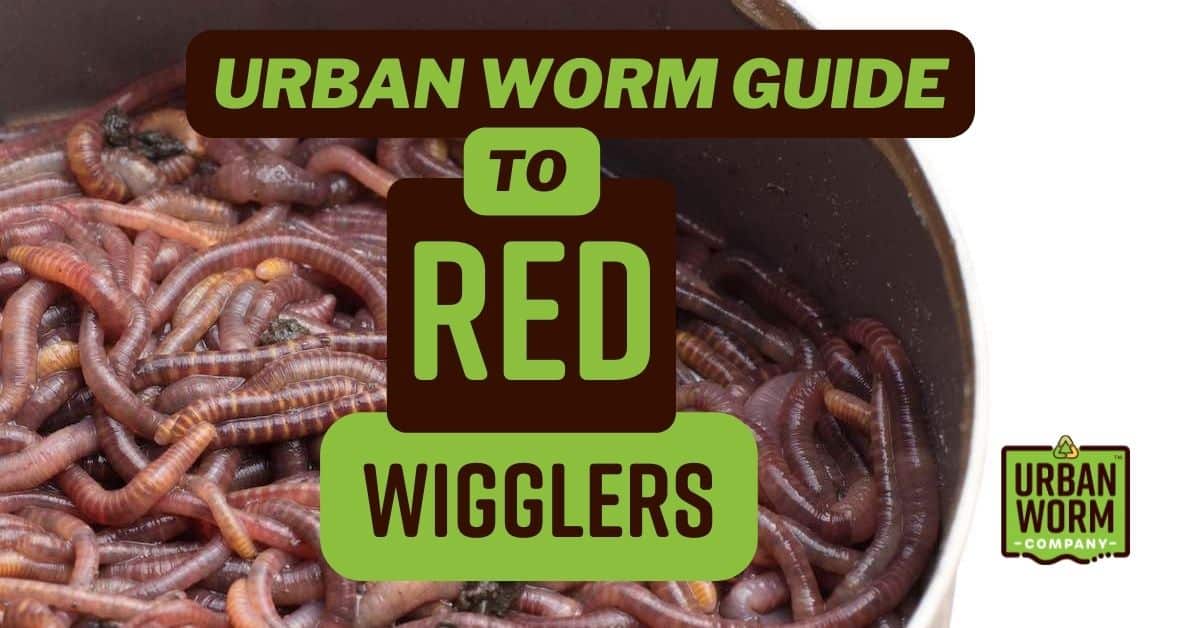Understanding Red Wiggler Composting: Necessary Practices for Healthy And Balanced Composting
Wiki Article
Comprehending the Advantages of Red Wiggler Composting: Just How This Efficient Approach Changes Organic Waste Into Nutrient-Rich Dirt Changes
Red Wiggler composting, using the types Eisenia fetida, provides an engaging strategy to organic waste monitoring, converting kitchen scraps and yard particles into important dirt changes. This approach not just enhances dirt fertility but additionally addresses pushing ecological issues, including garbage dump waste reduction and greenhouse gas exhausts.What Are Red Wigglers?
Red wigglers, clinically recognized as Eisenia fetida, are a varieties of earthworm that play a pivotal role in vermicomposting systems. These worms are characterized by their reddish-brown shade, segmented bodies, and a distinct ability to flourish in organic-rich atmospheres, making them suitable for composting applications - Red Wiggler Composting. Unlike their garden-dwelling equivalents, red wigglers favor to live in the top layers of dirt, where rotting matter is plentifulGenerally measuring in between 3 to 4 inches in size, red wigglers have a high reproductive rate, enabling them to increase quickly under optimal conditions. They have a special gastrointestinal system that allows them to refine natural waste efficiently, converting it right into nutrient-rich castings, which are very helpful for plant growth.
Their resistance to differing wetness levels and temperature level ranges further boosts their utility in vermicomposting arrangements, making them a preferred option amongst composting lovers. Additionally, red wigglers are cardiovascular organisms, which demands a well-aerated composting environment, ensuring reliable decomposition. Recognizing the biological attributes and behaviors of red wigglers is crucial for enhancing their use in sustainable waste monitoring methods.

Advantages of Vermicomposting
Using the power of vermicomposting deals a plethora of agricultural and environmental advantages. Firstly, it substantially lowers organic waste in garbage dumps, therefore minimizing methane exhausts, a powerful greenhouse gas. By drawing away food scraps and backyard waste to vermicomposting, we sustain a more sustainable waste administration system.In addition, vermicomposting boosts soil health. The castings produced by red wigglers are rich in crucial nutrients, germs, and enzymes, boosting soil structure and fertility. This nutrient-rich amendment promotes robust plant growth and enhances water retention, minimizing the need for chemical fertilizers.
Moreover, vermicomposting fosters biodiversity in the soil community. The introduction of useful bacteria from worm spreadings help in condition reductions and nutrient biking, producing a much healthier atmosphere for plants.
Economically, vermicomposting reduces the costs associated with chemical inputs and waste disposal. Gardeners and farmers can grow high-grade fruit and vegetables at lower costs, adding to food safety and security and sustainability.
How to Start Composting
Beginning a composting endeavor can be a fulfilling and simple process. To begin, pick an ideal place that is well-drained and receives partial sunlight. This will certainly aid preserve a balanced temperature level, critical for the composting process. Next, pick a compost container or produce an assigned area in your yard, ensuring it is easily obtainable for adding products and collecting compost.Gather natural materials such as kitchen scraps, lawn waste, and shredded paper. Go for a well balanced mix of 'eco-friendly' materials, high in nitrogen (e.g., fruit scraps, coffee premises), and 'brown' products, rich in carbon (e.g., dried out fallen leaves, cardboard) A proportion of approximately 2:1 environment-friendly to site web brown products is optimal.
Beginning layering your materials, making certain appropriate air blood circulation by turning the stack frequently. This advertises aerobic decay, reducing odors and speeding up up the process. Screen dampness levels; the compost needs to really feel like a damp sponge however not extremely wet.
Nutrient Profile of Vermicompost
Composting, specifically with red wigglers, generates a nutrient-rich item recognized as vermicompost. Additionally, it provides micronutrients like magnesium, calcium, and iron, promoting robust plant development and enhancing dirt wellness.The microbial task existing in vermicompost even more enhances its profile, presenting beneficial microorganisms and fungis that promote vitamins and mineral schedule and uptake in plants. This organic component aids in reducing plant conditions and boosting dirt structure, leading to enhanced water retention and oygenation.

Ecological Effect of Composting
The ecological influence of composting, especially through using red wigglers, is multifaceted and profound. This approach considerably lowers the volume of organic waste sent out to landfills, which consequently lessens greenhouse gas discharges, specifically methane-- a potent contributor to climate modification. By drawing away organic materials from land fills, red wiggler composting not only assists reduce ecological destruction yet additionally promotes sustainable waste monitoring practices.
Additionally, composting adds to carbon sequestration, as the process captures carbon dioxide from the atmosphere and stores it in the soil. This natural process aids in combating environment adjustment while improving the soil - Red Wiggler Composting. Generally, red wiggler composting provides a feasible, green solution for waste management and environmental sustainability, advertising healthier communities and a more sustainable future
Conclusion
In verdict, Red Wiggler composting offers as a reliable technique for converting natural waste into important soil modifications. The procedure not just improves dirt fertility and structure but likewise mitigates ecological issues connected with waste disposal.Red Wiggler composting, employing the species Eisenia fetida, offers a compelling approach to organic waste monitoring, converting cooking area scraps and lawn particles into valuable dirt modifications. Unlike their garden-dwelling counterparts, red wigglers favor to populate the top layers of soil, where rotting issue is abundant.
The castings created by red wigglers are abundant in important nutrients, germs, and enzymes, improving soil framework and fertility. The nutrient-rich byproducts of red wiggler activity enhance dirt structure, increase water retention, and advertise image source biodiversity within the dirt community.In final thought, Red Wiggler composting offers as an effective technique for transforming natural waste right into important soil modifications.
Report this wiki page